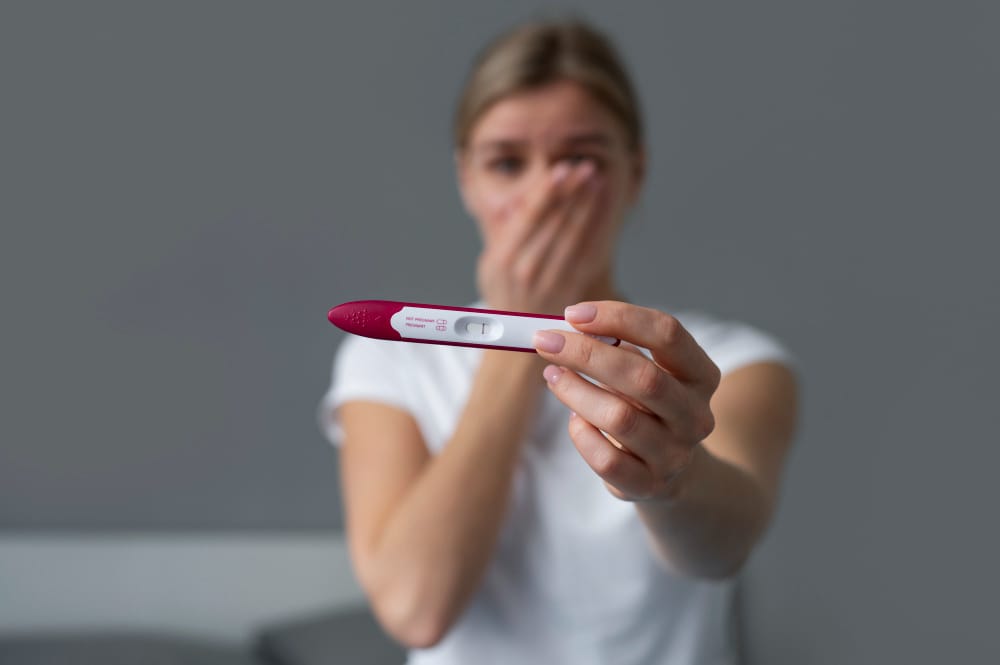The journey of fertility treatment technology can be both exciting and challenging. Embryo transfer is a crucial step and understanding what follows is essential. In this article we will discuss common post transfer experiences, potential concerns and how to address any issues. We will also highlight the importance of recognizing Negative Signs After Embryo Transfer and guide you on when to seek medical support.
Understanding the Embryo Transfer Process
Embryo transfer is a delicate procedure where one or more embryos are placed into the uterus with the hope that implantation will occur successfully. This procedure is often the result of months of hormonal treatments, lab work and careful monitoring. While many women experience only mild discomfort or common side effects such as slight cramping and spotting, it is essential to distinguish between normal post-transfer symptoms and those that might indicate complications.
The embryo transfer itself is generally quick and minimally invasive. However as with any medical procedure it can be associated with a range of physical responses. The body’s reaction to hormonal changes and the stress of the process can sometimes manifest in ways that raise concerns. This is why it is important to educate yourself about what to expect in the days and weeks after the transfer.
Note: In some cases you may experience Negative Signs After Embryo Transfer that warrant prompt attention.
Recognizing What’s Normal Versus Concerning

Many women ask themselves, “What should I be worried about?” While a bit of cramping or spotting can be typical, it is crucial to know when these symptoms might signal a problem. Here, we outline some key points for consideration:
Normal Post-Transfer Symptoms
- Mild Cramping: A little discomfort is expected as your uterus adjusts.
- Spotting: Light spotting can occur due to the manipulation of the cervix during the procedure.
- Emotional Ups and Downs: Anxiety and mood swings are common as you wait for your pregnancy test results.
When to Be Cautious
- Severe or Persistent Pain: Intense pain that does not subside might indicate an issue.
- Heavy Bleeding: More than light spotting, especially if accompanied by clots, can be concerning.
- Fever or Chills: These could signal an infection.
- Unusual Discharge: Changes in the color or odor of vaginal discharge may require medical evaluation.
If you experience any of these symptoms it is important to consult with your healthcare provider to rule out complications.
For insights into positive indicators post-transfer you might find our article on Positive Signs After Embryo Transfer helpful.
Detailed Look at Negative Signs After Embryo Transfer
Understanding and identifying potential issues is a critical part of post-transfer care. In medical terms Negative Signs After Embryo Transfer refer to any symptoms or physical changes that are not typical of the standard recovery process. Let’s explore some specific examples:
1. Severe Abdominal Pain
While mild cramping is normal, pain that intensifies or spreads could be a sign of an infection or a complication such as ovarian hyperstimulation syndrome (OHSS). If you notice this, it is essential to note the duration and intensity of the pain and share this information with your doctor.
2. Excessive Bleeding or Unusual Discharge
Spotting is common but if you experience heavy bleeding or discharge that is foul smelling or has an unusual color this might indicate an infection or other complication. Keeping a diary of your symptoms can help your healthcare provider assess the situation more accurately.
3. Fever and Chills
A mild increase in body temperature can sometimes occur due to stress or hormonal fluctuations. However a fever combined with chills or sweating is not typical and should be evaluated promptly.
Steps to Take When Facing Negative Signs
If you believe you are experiencing symptoms that fall under Negative Signs After Embryo Transfer taking the appropriate steps can help safeguard your health. Here are some practical measures to consider:
1. Document Your Symptoms

- Keep a Journal: Record the type, duration and severity of your symptoms. Note any changes over time.
- Monitor Temperature: Checking your temperature regularly can help you spot a fever early.
- Bleeding Pattern: Taking note of bleeding pattern will be helpful for your healthcare provider.
2. Reach to Your Healthcare Provider
Don’t hesitate to reach out to your fertility specialist or primary care doctor. Clearly explain your symptoms and share your recorded observations. Your doctor may advise you to come in for an evaluation or perform additional tests to ensure everything is progressing normally.
3. Follow Medical Advice
Your healthcare provider might recommend:
- Rest and Hydration: Allow your body to heal by getting plenty of rest and staying well hydrated.
- Medications: In some cases antibiotics or pain relievers might be prescribed to manage symptoms.
- Follow Up Appointments: These appointments are important for monitoring your recovery and adjusting treatments.
4. Seek Support
Managing uncertainty during this time can be mentally and emotionally stressful:
- Speak to Expert: Professional support can help you manage stress and anxiety.
- Join a Support Group: Sharing your experience with others who have undergone embryo transfer can provide comfort and practical advice.
While most post-transfer symptoms are normal, some Negative Signs After Embryo Transfer can be concerning, making open communication with your provider essential.
Differentiating Between Normal Discomfort and Concerning Symptoms
It is natural to feel a bit anxious after undergoing an embryo transfer. However understanding the difference between expected discomfort and more serious complications can help reduce anxiety and empower you to take appropriate action. Here are a few tips to help you differentiate:
- Timing Is Key: Normal discomfort generally subsides within a few days. If symptoms persist beyond a week or worsen, it may be time to consult your doctor.
- Intensity Matters: Occasional mild pain is different from continuous, severe pain. Trust your intuition—if something feels off, it’s best to seek a professional opinion.
- Accompanying Symptoms: Pay attention to what accompanies your pain. For instance, cramping alone might be harmless, but cramping with heavy bleeding or fever could signal an issue.
It is critical to differentiate between normal discomfort and genuine Negative Signs After Embryo Transfer that require medical attention.
Also Read: How to Identify Signs of Pregnancy After Abortion
Role of Follow Up and Continuous Monitoring
Post-transfer care does not end after recovery. Regular check-ups help confirm that the embryo has implanted and your body is healing well. Your doctor may schedule follow-up visits to check hormone levels and do ultrasounds to track progress.
Tips for Effective Follow Up:
- Attend All Appointments: These are opportunities for your doctor to monitor your progress and catch any issues early.
- Communicate Openly: Share any new or lingering symptoms with your provider, even if they seem minor.
- Adjust Your Care Routine: Based on your symptoms, your doctor might suggest lifestyle or medication adjustments to optimize your recovery.
Monitoring Negative Signs After Embryo Transfer closely can provide peace of mind during your recovery process.
Self-Care and Emotional Well-Being

Caring for your emotional health during this time is just as important as addressing physical symptoms. The uncertainty and emotional rollercoaster of fertility treatments can be overwhelming. Here are some self care strategies:
- Mindfulness and Relaxation Techniques: Practices such as meditation or deep-breathing exercises can help reduce stress.
- Stay Connected: Lean on friends, family or support groups who understand your journey.
- Maintain a Healthy Lifestyle: Balanced nutrition, moderate exercise, and sufficient sleep can all contribute to your overall well-being.
- Educate Yourself: Understanding what to expect can reduce anxiety. Reliable sources and open discussions with your healthcare team are invaluable.
Always discuss any Negative Signs After Embryo Transfer with your specialist for a personalized approach.
Conclusion
Going through the period after an embryo transfer can be tough but being well informed about the process and what to expect can help you feel more in control. Most women experience only minor and temporary discomfort but it’s important to stay alert for any Negative Signs After Embryo Transfer that may suggest complications. By recording your symptoms, maintaining clear communication with your healthcare provider and taking prompt action when necessary you can address any issues quickly and effectively.
Keep in mind that everyone’s experience is different. Listen to your body and trust your feelings—if something feels off, seek help right away. Identifying Negative Signs After Embryo Transfer early can improve outcomes and provide peace of mind as you move forward on your path to a successful pregnancy.
Frequently Asked Questions
1. Is cramping normal after an embryo transfer, or is it a Negative Sign?
Mild cramping is normal and can be a sign of implantation. However, if the pain is severe, persistent, or worsens over time, it may indicate a problem and should be checked by a doctor.
2. When should I worry about spotting after embryo transfer?
Light spotting is common and may occur due to the procedure. However, if you experience heavy bleeding, large clots, or prolonged spotting, it could be a Negative Sign After Embryo Transfer and should be evaluated.
3. Can bloating be a Negative Sign After Embryo Transfer?
Mild bloating is normal due to hormonal changes, but excessive bloating, rapid weight gain, or severe abdominal discomfort may indicate ovarian hyperstimulation syndrome (OHSS) and should be evaluated by a doctor.
4. What should I do if I notice unusual discharge after embryo transfer?
If your discharge has a foul smell, an unusual color, or is accompanied by itching or discomfort, it could indicate an infection and requires medical attention.
5. Does heavy bleeding always mean a failed embryo transfer?
Not necessarily. Some women experience bleeding and still have a successful pregnancy. However, heavy bleeding with clots or severe cramps could indicate a complication and should be reported to your doctor.
Images By: FreePik




